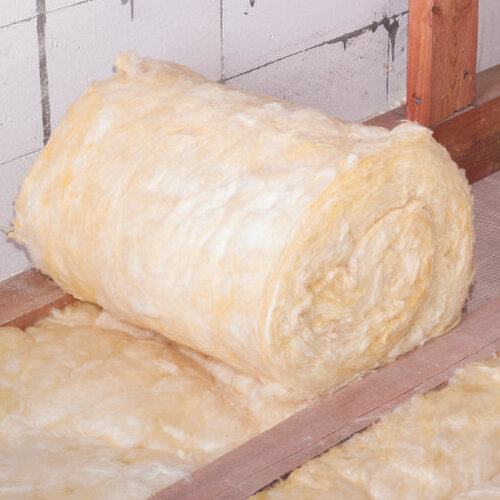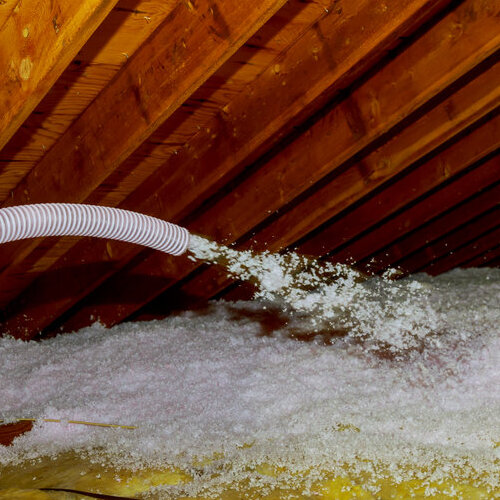
The Importance of Attic Insulation
After the early part of 2021, homeowners in the most southern and warmest parts of the country are seeking ways to make their homes warmer in the winter. Being energy efficient is a goal as well, especially in Texas, where the summers are downright blistering hot. So, starting from the top and working their way down, attic insulation replacement and new windows are often the first things taken care of.
Knowing how attic insulation works will help you understand how and why attic insulation is important – and it will help you understand why attic insulation replacement is important, too. Attic insulation is a thermal barrier that reduces the movement of thermal energy into and out of your home. Simply put, attic insulation blocks heat from coming inside in the summer and keeps heat inside in the winter.
You need attic insulation to keep your house cool in the winter and to keep it at an ideal warm temperature in the winter, all with minimal to no effect on your utilities. If you haven’t already been there, go to the attic, and you should see that even the flooring is covered with insulation.
That is what is keeping the cool air in the summer and the warm air in the winter inside your home. If there isn’t any – or if there is very little – then it is time to have a professional quote you on attic insulation replacement.
Which attic insulation is best?
What makes an attic insulation replacement the best? That is going to depend on what you are expecting and needing with your insulation. Here, we have listed some common types of attic insulation with their pros, cons, and their R-value. This information can help you make a decision on which is the best for your home:
Fiberglass Batt
This is the easiest attic insulation replacement on the market, but it also has the worse R-value and performance. Still, because it is the easiest to install, typically being a weekend DIY project, it is still popular and better than nothing.
Cellulose
Made from ground-up paper and boric acid (offering insect control), this fire-resistant attic insulation replacement is better than the batts described above. This can be a DIY home improvement project as well with bags of the material available at any big box home improvement store. With a large enough quantity, some stores will loan you the insulation blower at no charge.
The downside to cellulose insulation is the amount of dust it creates, which can be a hindrance. However, a professional can install wet-spray cellulose as dust control, but not so much as to reduce its effectiveness. With an approximate R-value of 3.5 per inch, there isn’t an actual air barrier. However, air movement is stopped by its density.
Loose-Fill Fiberglass
This attic insulation replacement material dominates the new-build industry with an approximate R-Value of 2.5 per inch. It is typically blown in by a machine and requires a respirator while installing it. Because the fiberglass causes itchy skin and makes breathing difficult, it is recommended to have it professionally installed.
A downside in the history of loose-fill attic insulation replacement is the loss of effectiveness once temperatures drop to 20 degrees and colder. The new manufacturing process improved on this issue.
Spray Foam
Most professionals believe this is the best performing attic insulation replacement on the market. It comes in two types, closed-cell with an R-value of 6.5 and open-cell with an R-value of 3.6 per inch. Professional installation will assure that all crannies and nooks are thoroughly covered, keeping air movement out with zero heat transfer.
The downside to either of these spray-foam attic insulation replacement materials is the expense. Professional installation is recommended to ensure you’re getting the best coverage possible. A big downside is the toxic off-gassing, another reason professional installation is recommended.
Can attic insulation cause allergies?
Attic insulation replacement materials often have an odor that can make some people sick with prolonged exposure. Professional installation of any type of attic insulation can typically prevent this from happening. If you choose a DIY project with your attic insulation that results in members of your home getting sick, call a professional immediately to help rectify the problem and avoid possibly serious health issues.
Can attic insulation catch fire?
While most attic insulation replacement materials are extremely fireproof, there is a wide range of issues that can cause them to burn. Fiberglass insulation is naturally fire-resistant because of the glass and plastic polymers it is made from. Batt style of attic insulation has a foil or paper backing that burns fast and cellulose attic insulation is not fireproof unless treated with flame retardants that minimize combustion. An attic insulation material made from mineral wool is non-combustible.
How much does it cost to remove and replace attic insulation?
Removing old attic insulation can cost as much as $1.50 per square foot. Attic insulation replacement can be as low as $2 per square foot and up to $8.50 per square foot depending on the material. If the existing insulation is in good condition, it may cost less than $1.50 per square foot to remove.
How do I get rid of old attic insulation?
If you want to save money, removing the old attic insulation yourself may be a possibility. If you’re not sure the old insulation should be removed before the new attic insulation replacement, know that removing it will also remove any possible rodent infestation and mold. It also improves the air quality and energy efficiency once the attic insulation replacement is installed.
To remove the existing attic insulation yourself, work in small areas and work your way through the entire attic. This takes longer but makes the removal easier. Invest in protective gear for your own safety, including eye-wear, face mask, rubber-coated gloves, long sleeves, and a pair of coveralls. A flashlight will be helpful as you go about removing the old attic insulation.
To get the job done quicker, rent a commercial-grade insulation removal vacuum. The gas-powered engine will have metal connectors to the vacuum and large vacuum bags that will help get it done safely and fast. You want to have plenty of 50-gallon construction-type trash bags, dustpans, and rakes on hand to remove blown-in insulation.
Most attics are not built for a lot of foot traffic, so you’ll want to walk with caution and keep moving. If you have a hardhat it will give you added protection. With all of this in place and on hand, get started following these tips:
- BLOWN-IN CELLULOSE: With a flashlight, ladder, and a commercial vacuum, and wearing all the safety equipment listed, begin vacuuming up the blown-in insulation, raking insulation into your dustpan and into the waste bags. Then with your shop-vac, get any remaining insulation the commercial vac didn’t get. Rinse, repeat until all old insulation is gone. Take a break every 15 or 20 minutes. Toss the filled waste bags in a dumpster.
- FIBERGLASS BATT INSULATION: Following the same process with the commercial vacuuming after you have rolled up all the old insulation, place the rolls into waste bags, simply vac up the floors.

When It Is All Said and Done…
So is it worth replacing attic insulation? Absolutely! Attic insulation can last up to 100 years, but over time, it will lose its efficacy. However, by replacing it every 12 to 15 years, you can be sure that it is doing the best job possible of keeping your home warm in the winter and cool in the summer.

